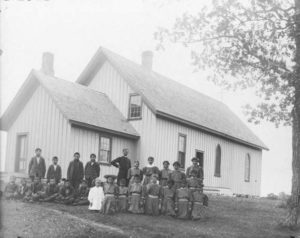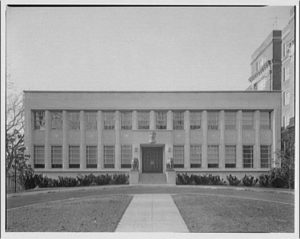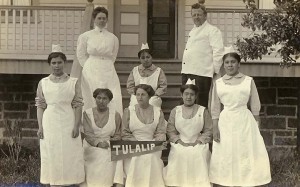Robert G. Valentine served as commissioner of Indian Affairs from June 1909 to September 10, 1912. Valentine ran into trouble when he issued his “religious garb” order, without prior approval from the secretary of the Interior. The order forbade anyone to display religious garb or insignia in Indian schools and missions. Though his edict applied to all religious orders, the primary people affected were Catholics.
His move backfired, and President Taft directed the secretary of the interior to revoke the edict. Valentine ended up resigning his position September 11, 1912, and a compromise measure was approved by the secretary: though no one currently working would be fired, there would be no further hiring of teachers who insisted on wearing religious garb. Valentine was investigated by Congress after his resignation, but was not prosecuted after being found guilty of six charges.
Valentine became a respected labor mediator, before dying in 1916 at the age of 44. The tiny community of Truxton Canyon, Arizona, changed its name to Valentine in 1910, to honor commissioner Valentine.
________________________________________________________



